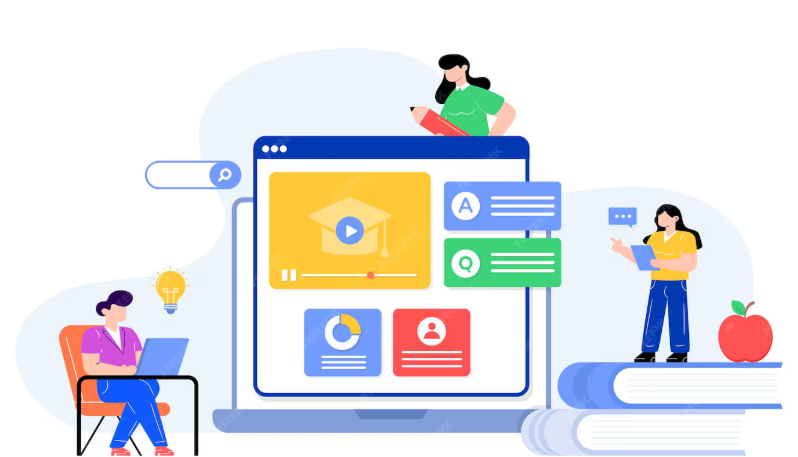In 2025, this blog offers course designers useful tactics for connecting with audiences around the world. It emphasizes how crucial it is to go beyond straightforward translation in order to succeed internationally, touching on important topics like mobile optimization, cultural adaptability, multilingual content creation, and global payment systems.
Understanding the Global Education Landscape
The market for online education has changed significantly, and geographic location is no longer a factor. Effective course designers in 2025 understand that a global approach involves more than just translation; it also involves cultural relevance, technological accessibility, and strategic positioning. Southeast Asia, Africa, and Latin America have seen the most development in the worldwide e-learning sector, which currently stands at over $400 billion. For course developers hoping to reach a wider audience outside of their home markets, it is imperative that they comprehend these regional differences.
Multilingual Content Strategies
The greatest obstacle to the worldwide delivery of courses is still language. Even though English is still the most widely used language online, successful course developers now strategically use multilingual methodologies. Significant advancements have been made in AI-powered translation technologies, which now provide affordable localization options. However, in order to capture local nuances and context, effective worldwide courses combine computer translation with human assessment. Before spending money on complete voice-over or re-recording, think about beginning with subtitles and transcripts in the main languages. Sort languages according to the demands of your target audiences.
Cultural Adaptation Beyond Translation
For truly global courses, translation is not enough on its own. Cultural allusions, case studies, and examples must be relatable to a range of audiences. The material of successful courses is modular, allowing for cultural adaptation without requiring a whole course redesign. This could entail producing culturally relevant supplemental materials or different examples for various audiences. Think about how learning techniques vary by culture; some areas encourage self-directed learning, while others favor structured, instructor-led methods. You may accommodate these choices by incorporating flexibility into your course design.
Global Payment Solutions
For many overseas users, processing payments continues to be a major challenge. Conversion rates on course platforms with extensive international payment alternatives might reach 40% higher than those with fewer payment options. Provide regional payment methods such as Alipay, M-Pesa, PIX, and different local bank transfer choices in addition to credit cards. Think about pricing schemes that take into consideration regional differences in purchasing power, such as location-based tiered pricing. Building confidence with audiences around the world requires transparent policies surrounding currency conversion and international costs.
Time Zone Considerations
Live components pose difficulties for courses that are really international. Asynchronous-first strategies combined with well-placed live components are used by successful course designers. Think about recording all live conversations for asynchronous access or varying the timing of live sessions to accommodate various geographical locations. Regional community managers who lead conversations and offer assistance during local business hours have proven to be effective for certain course developers. To avoid misunderstandings, clearly convey time expectations across several time zones.
Mobile Optimization
Mobile devices are the main way that people in many emerging markets access online education. In places like Africa and Southeast Asia, completion rates for courses designed for mobile-first experiences are noticeably higher. Make sure your course platform offers top-notch mobile experiences with smoothly streaming video content across a range of connection speeds. For users who live in places with erratic internet connectivity, think about creating downloadable content options. Usability problems that might not be noticeable on expensive equipment can be found by testing your course experience on low-end mobile devices.
Global Credentialing and Recognition
Internationally recognized qualifications are sought after by users all over the world. The popularity of your course can be greatly increased by collaborating with internationally renowned accrediting organizations or trade associations. Modular credential systems that correspond with regional certification frameworks have proven successful for certain course developers. Blockchain-verified certificates and digital badges have become popular due to their cross-border portability. Make sure your credentials offer genuine value to international users by researching recognition requirements in the target regions.
Culturally Inclusive Marketing
It is necessary to modify marketing tactics for various cultural contexts. Successful course developers throughout the world spend money on localized marketing materials instead of just translating pre-existing content. Regional differences in the popularity of social media platforms are notable; WeChat is the most popular in China, whilst WhatsApp is crucial in Latin America and Africa. Discoverability is increased by using suitable SEO tactics and being aware of regional search engines (such as Baidu or Yandex). More often than not, building connections with local education communities and influencers works better than doing extensive worldwide marketing.
Legal and Regulatory Considerations
Although it can be difficult, navigating international legislation is necessary for legal foreign activities. Careful data management procedures are necessary due to the wide variations in privacy legislation (from the GDPR in Europe to the LGPD in Brazil). International sales can have complicated tax ramifications, possibly necessitating registration in several different jurisdictions. Certain areas have restrictions on particular subjects or particular standards for the educational material. Costly compliance problems can be avoided by collaborating with legal professionals who are knowledgeable about the educational laws in your target markets.
Building Global Communities
Despite cultural differences, community development is still crucial for course success. Regional user communities establish support systems that take cultural and linguistic variances into account. Some course designers create ambassador programs to find motivated users who can lead study groups locally and offer assistance that is appropriate for their culture. Platform elements that enable language or regional sub-communities while preserving linkages to the larger user body should be taken into account.
In 2025, your online courses must be purposefully designed, sensitive to cultural differences, and strategically adjusted to reach a genuinely global audience. Instead of considering internationalization as an afterthought, great course designers incorporate global accessibility into their core strategy. Language hurdles, cultural disparities, and regional preferences can all be addressed to produce cross-border educational experiences without sacrificing the caliber and potency of your material. Those that are prepared to invest in careful internationalization methods can take advantage of the enormous potential presented by the growing global education sector.





